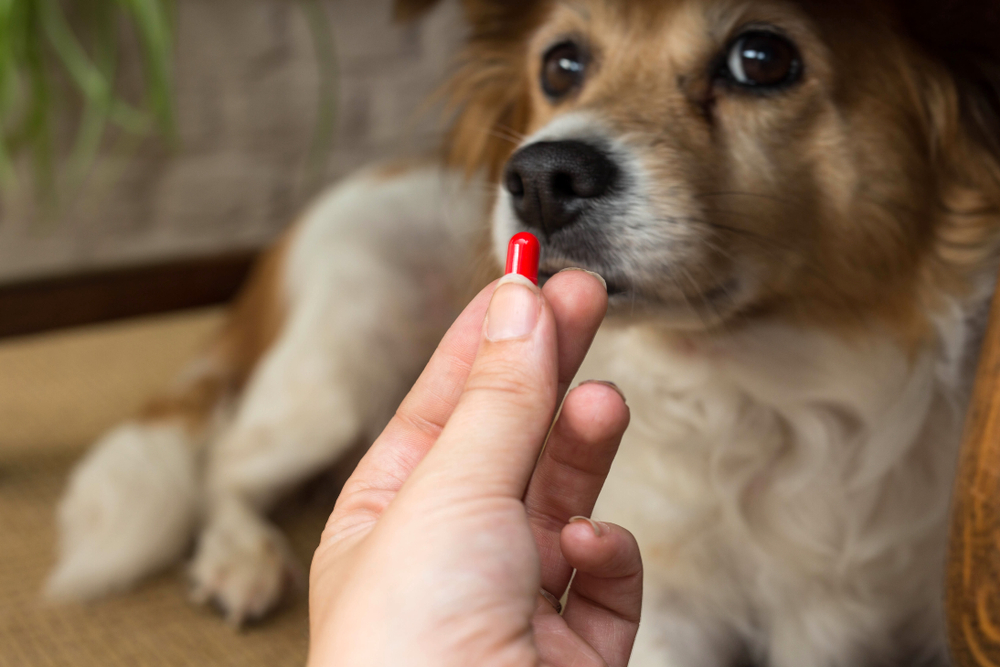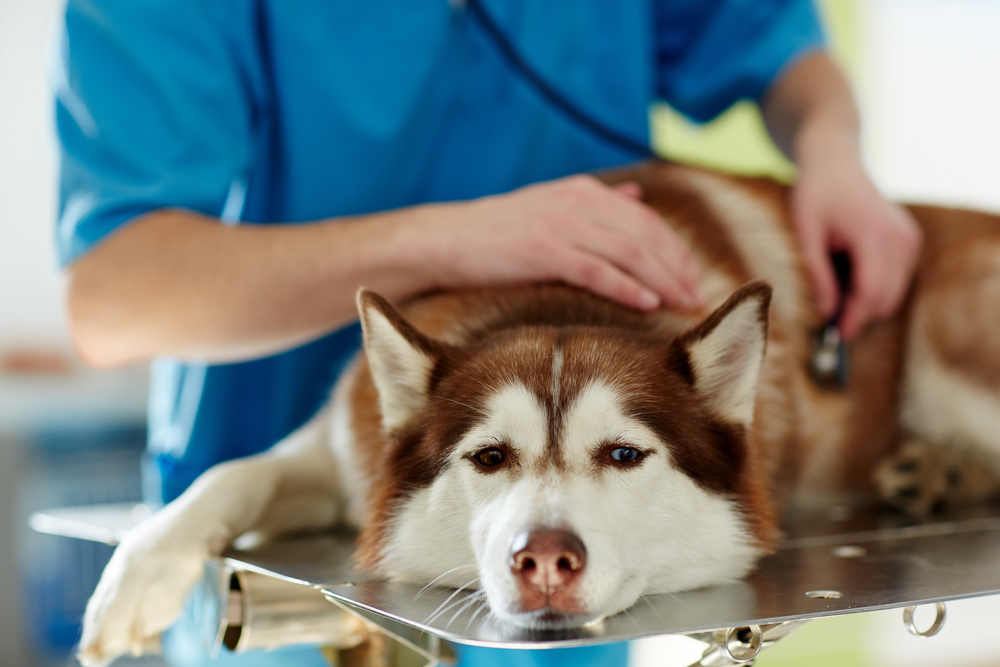You may know that some human medications can be given to dogs, but this should never be done without first consulting your vet about safety and dosage. Dogs metabolize medications differently from humans, making them more sensitive to some and requiring higher doses of others. Benadryl can be given to dogs for allergies and motion sickness. If your dog has taken too much Benadryl, don't panic. Contact a vet or pet poison hotline immediately. Keep reading for more info on Benadryl overdose.

What Is Benadryl
Benadryl is the common name for Diphenhydramine hydrochloride, an H1 antagonist that blocks histamine, reducing allergic reactions like itching, redness, and rash. Drowsiness is a common human side effect, but its intensity varies in dogs. Oral Benadryl comes in tablets, gel capsules, chewable tablets, and oral liquids.
Is Benadryl Safe For Dogs?
Medication safety depends on the animal's age, breed, and health. Veterinary advice is crucial before giving pets human medications. Generally, Benadryl is relatively safe for dogs. It helps with airborne and contact allergies, travel sickness, and mast cell tumor treatment, especially useful for long car rides with its anti-nausea and sedative effects.
What Is The Dose of Benadryl for Dogs?
The dose range for adult dogs is 2 - 4 mg/kg (0.9 - 1.8 mg/lb) every 8 - 12 hours as needed (2 - 3 times per 24 hours). Start with the lower dose and increase if necessary. Liquid capsules are hard to divide. Children's liquid is good for small dogs but not practical for large doses. Ensure liquid Benadryl doesn't contain xylitol, which is toxic to dogs.

Potential Side Effects of Benadryl in Dogs
Dogs sensitive or allergic to antihistamines may have adverse effects to Benadryl, even at normal doses. Monitor your dog closely in the first few hours after administration. Possible side effects include depression, hypersalivation, tachypnea, and tachycardia.
Benadryl Overdose In Dogs
Studies show the toxic dose of diphenhydramine for dogs varies. Side effects usually appear around six times the recommended dose, with severe effects after ten times. A double dose may be okay, but a whole packet or bottle can cause toxicity. Death from oral diphenhydramine alone is rare, but overdose signs can be distressing and risk organ damage. Assess dogs that have had more than twice the normal dose or show signs by a vet.

The 5 Signs of Benadryl Overdose in Dogs
In addition to potential side effects, Benadryl overdose may cause:
1. Agitation/hyperactivity
Increasing diphenhydramine dose can shift the central nervous system effect from depression to agitation. Dogs may become twitchy, energetic, and aggressive.
2. Dry mucous membranes
A dry or tacky gum feeling, usually associated with dehydration, can also indicate an overdose and a vet visit is needed.

3. Mydriasis
Dilated pupils in normal to bright lights are a sign of something wrong and associated with diphenhydramine overdose.
4. Disorientation
This can be due to central nervous system stimulation or other effects. Contact your vet if your dog seems disoriented after taking the medication.

5. Fever
A high body temperature indicates inflammation. You can try to take your dog's temperature if you have a thermometer. The normal rectal temperature for a dog is 100 - 102.5°F. If you don't have a thermometer, you can feel your dog's ears and nose, but it's not very accurate.

How Is Benadryl Overdose Treated?
Treatment may include inducing vomiting, administering activated charcoal +/- a cathartic, and intravenous fluid therapy. Dogs usually respond well and make a full recovery.

What About Other Forms of Benadryl?
Some Benadryl forms (e.g., Benadryl Plus, Congestion) contain other ingredients like Phenylephrine, which shouldn't be given to dogs. If your dog has ingested one of these, seek advice immediately. Side effects of phenylephrine ingestion include agitation, hyperactivity, mydriasis, tachycardia, hypertension, anxiety, tremors, hyperthermia, head bobbing, hiding, and vomiting.
Final Thoughts
Benadryl can be given to dogs relatively safely after consulting a vet. It's generally safe, with side effects rare unless given 6 - 10 times the recommended dose. Some dogs may be sensitive or allergic, so caution is needed. Common side effects include tachycardia, tachypnea, lethargy, and hypersalivation. Overdose signs may include hyperactivity, dry mucous membranes, dilated pupils, fever, and disorientation. If you suspect an overdose, contact a vet or poisons hotline.
